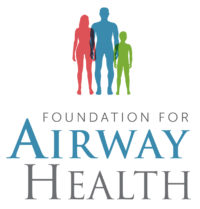How do I know if I have a tongue-tie?
How do you know if you have a tongue-tie? This is the scenario that plays over and over each week. I start my day and jump into my inbox just to find pictures of total strangers with their mouths open and tongues sticking out.
“Do I have a tongue-tie?” they ask.
I’m sure it’s always disappointing to them when they get my reply:
“It’s hard to say. It looks suspicious, but remember that a tongue-tie is based on oral function not appearance. I would encourage you to schedule a comprehensive myofunctional assessment to find out for sure, and to develop a roadmap for your release, in the event that you do have a tongue-tie.”
In this article, I will be discussing how to figure out if you have a tongue-tie and what roadmap you should follow if you have a tongue-tie (or suspect one).
What is a tongue-tie?
Ankyloglossia (proper term), is a condition that is present at birth, although often overlooked. This condition restricts the range of motion due to an unusually short or tight band of tissue called the lingual frenum. The tissue anchors the tongue to the floor of the mouth. Tongue-ties vary in severity, with some having very limited movement and others only having slight impairment. This restricted movement causes poor muscle function. As a result of poor muscle function, other oral functions are also altered. Treating a tongue-tie is relatively simple with a procedure called a frenectomy.
Read more about frenectomies:
What causes a tongue-tie?
A tongue-tie is a congenital issue that is present shortly after conception. If you have a tongue-tie, you’ve had it from birth. You didn’t just suddenly have it, no matter how convinced you are that “it has just now grown tight”.
Why is having a tongue-tie concerning for infants?
A tongue-tie can be a big pain in the butt when it comes to successful breastfeeding. The proper function of the lip and tongue is important for milk transfer. When an infant has a tongue-tie, the baby can’t nurse properly. Some mothers don’t notice any difficulty with breastfeeding, but that doesn’t mean it’s not there!
The identification of a tongue-tie in an infant is needed as soon as possible. It will definitely affect the craniofacial development of your child, which in turn affects dental occlusion and airway development.
In my experience, it can be extremely frustrating for parents of a tongue-tied infant, because the tongue-tie gets dismissed by a doctor who doesn’t understand tongue-ties. Identification of a tongue-tie does not always have to do with the fact that an infant can extend the tongue. It is a common misconception that if an infant can stick the tongue out that they can’t be tongue-tied. The extension of the tongue is not the same as the elevation of the tongue.
Want to take a bit of a deeper dive into infants and children? We also encourage you to read:
- The Ultimate Guide To Tongue-Ties
- 6 Things Every Parent Should Understand About Craniofacial Development
Why is a having a tongue-tie concerning for children?
Tongue-ties limit tongue mobility. The movement of the tongue is important for speaking, chewing, drinking, breathing, swallowing, and more. It is also extremely important for adequate craniofacial development. Identification of a tongue-tie in a child is beneficial so that parents can plan a release before the head and face are completely developed.
However, it is important to consider the timing of the release. A child who is not old enough to comprehend, comply and cooperate with adequate myofunctional therapy could experience unsuccessful rehabilitation of the oral structures. Your myofunctional therapist will be evaluating to make sure your child is of an acceptable age to do therapy, or it might be a good idea to wait.
Why is having a tongue-tie concerning for adults?
Adults often experience difficulty with correct oral rest posture, swallowing, breathing, sleeping, and upper body tension when it comes to tongue-ties. Many adults have experienced symptoms for years, having no idea that anything is really “broken” (dysfunctional). As adults grow from tongue-tied infants to tongue-tied children to tongue-tied adults, compensatory patterns and habits are developed, often unbeknownst to the adult. Adults most often complain of poor sleep quality, digestive and swallowing problems, TMJ pain, posture issues, speech impediments, headaches, and upper body tension. Adults tend to find out about tongue-ties when a child is born with a tongue-tie, and the parents start to understand the familial relationship.
Want to take a bit of a deeper dive? We also encourage you to read:
- It’s About So Much More Than Tongue-Tie Appearance
- Tongue-Tie Diagnosis: A Guide to Help You Understand the Complexity of a Tongue-Tie Diagnosis and the Importance of Evaluating the Whole Person For Myofunctional Impairment
- Tongue-Ties and Myofunctional Therapy: 2 Pieces Of the Puzzle
What are the long-term effects if you have a tongue-tie and ignore it?
When making the conscious decision not to release a tongue-tie, a person needs to understand the long term consequences of that decision. It depends upon the severity of the tie and the symptoms associated with the tongue-tie. As a person ages, the body’s adaptations and compensations will give way, resulting in an increase in symptoms.
Leaving a tongue-tie behind can affect sleep, breathing, facial development, posture, chewing, speech and so much more.
How you find out if you have a tongue-tie.
I encourage you to have a comprehensive myofunctional assessment if you think you have a tongue-tie. Some tongue-ties are “low hanging fruit” and can be easily self-diagnosed. Other’s require the assistance of an experienced provider. A myofunctional therapist is the right place to start. Remember, the diagnosis of a tongue-tie is not about the appearance of the tongue, but rather the function of the tongue.
What if my Dr. says that I don’t have a tongue-tie?
Sometimes the anterior portion does not appear to be causing problems so your doctor says that it’s fine. But, the posterior portion could be the culprit. A tongue-tie gets overlooked because many doctors simply ask you to stick the tongue out. Sure, maybe you can stick out your tongue but what about all the other attributes of oral function?
What about the elevation of the posterior blade of the tongue, which is necessary for correct oral rest posture and correct swallowing? Many people have adequate mobility of the anterior portion of the tongue (or have adequate “free tongue”) but have a severe restriction or dysfunction of the posterior portion. This is why it is extremely important to work with an experienced myofunctional therapist to make sure a full evaluation is completed.
Generally by the time I am done with an exam, I’ve spent a couple of hours getting to know you. I’ve evaluated symptoms, signs and history from infancy until now. I’ve looked at breathing, digestive issues, sleep quality, toxic oral habits, swallowing mechanics, speech concerns, posture, upper body pain, and tension.
I’ve also studied 10-18 different photos and videos where I evaluate facial symmetry, dental occlusion, and misguided craniofacial development.
And lastly…of course I’ve done the functional assessment, so I know exactly what your oral function looks like.
If you’ve asked your doctor about having a tongue- tie and he or she didn’t spend 1-2 hours examining you, then two things are true.
#1. Your doctor has an antiquated, close minded view of tongue-ties.
#2. Your doctor is probably wrong.
Doctors who understand tongue-ties, myofunctional therapy, and frenectomies know that you don’t diagnose tongue-ties based on appearance. They know that you diagnose tongue-ties based on oral function and that it takes more than 3 seconds and sticking your tongue out to correctly identify whether or not you have a tongue-tie.
(Yes, some tongue-ties are “low hanging fruit” but most actually aren’t. Most people are compensating so it might be hard to tell.)
My approach to evaluating tongue-ties.
When I’m evaluating a tongue, I’m looking at it from many different angles. I don’t just ask you to “stick your tongue out” and see what the shape looks like. I’m evaluating the movement and function of the tip, middle, and posterior blade of the tongue.
The biggest concern for many of my clients is choking. The back of the tongue does not move and can’t elevate to the palate. Some of these clients can stick their tongue way out, but can’t operate the back of the tongue. This is why it’s important to work with a myofunctional therapist who has a lot of experience, but also operates from a common sense approach. It’s not all about what the tongue range of motion is. It’s about a much bigger picture of myofunctional impairment, or myofunctional dysfunction.
What to do if you suspect a tongue-tie.
I encourage you to save time and frustration by starting with a myofunctional therapist. Don’t waste your time posting pictures inside a Facebook group or sending photos in a desperate email attempt to find out. (Remember that all people inside a Facebook tongue-tie group are not qualified to be giving advice, and many are spewing misinformation or toxic opinions right and left. It’s an important question, so leave it to the professionals.)
If you suspect that you have a tongue-tie, make a free visit with me! Every single person is welcome to 30 minutes of my time to discuss concerns and goals for therapy. From that free visit, we determine if we are a good match to work together and if a paid exam makes sense.
How myofunctional therapy “ties” in.
Orofacial myofunctional therapy (OMT) is like physical therapy for your mouth and face muscles. It’s my job to help you prepare the muscles for the tongue-tie release (frenectomy) and then to complete the rehabilitation part after the release. Simply “cutting” the frenum is not enough for success.
There are many things to look at before just jumping into scheduling a release. This is why it’s important that you’re working with an experienced therapist, because your myofunctional therapist is the hub of the wheel that helps you build your comprehensive health care team. Sometimes we need an ENT, allergist, speech therapist, orthodontist or sleep doctor. And, keep in mind, the “order of operations” is extremely important. Airway first! This means that if an airway crisis is evident, we don’t just jump into releasing the tongue. This is where your myofunctional therapist comes in. He or she will be your “myofunctional tour director”.
Here Are Some Other Resources That Might Be Helpful:


Meet Carmen Woodland
I found this path of passion years ago as a dental hygienist. After a stint in graduate school to earn my M.B.A., I decided that I needed to pivot. My heart was no longer in scraping teeth, but making a much bigger impact on lives touched by myofunctional impairment.
My story is personal and close to home. My sweet granddaughter was passed back and forth amongst doctors and therapists for years trying to figure out her speech, breathing, sleep, chewing and swallowing issues. It wasn’t until I completed more training that I knew her problem was a significant tongue-tie. Bingo.
Fast forward to now. I’m a crusader. A warrior. A voice for those who can’t find theirs, or who don’t have one.
I left clinical hygiene practice to start Integrative Myofunctional Therapy. It has evolved from a way to make a living, into an obsession!
I see clients all over the world and provide innovative, virtual therapy in the remotest of places.
In addition, I also
- Teach other dental hygienists, speech therapists & dentists how to become myofunctional therapists through the Myofunctional Therapy Training Academy, the Myo Mastery Program, Ignition Implementation Lab, and Triumph Business Training For Myofunctional Professionals
- Coach dental offices on how to implement myofunctional screening into the daily practice
- Speak in various settings
I’m an airway provider for the Foundation of Airway Health, where I work diligently for the recognition, diagnosis, and treatment of airway-related disorders.
And last but not least, I’m a proud member of several professional associations that afford me the opportunity to learn so that I can help you. My professional memberships include:


